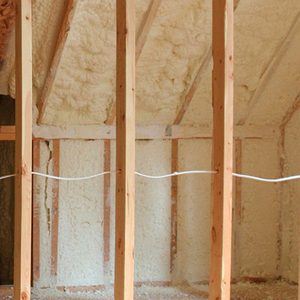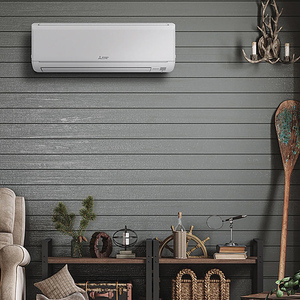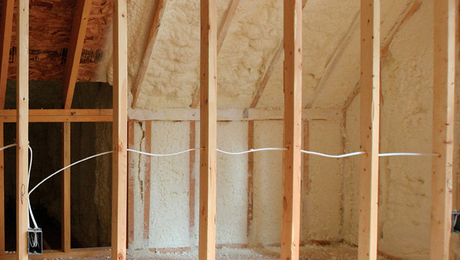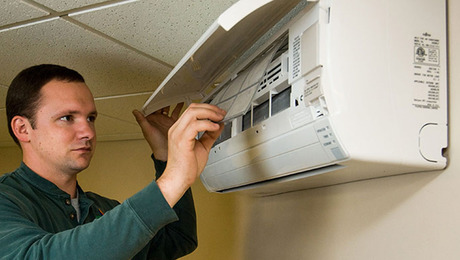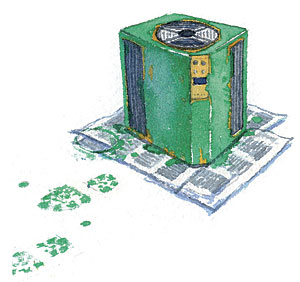
If homebuilders had a magic appliance that could provide an endless supply of inexpensive and environmentally friendly energy, then we would have an excuse to keep building homes without paying attention to how much energy they will use. People who installed the technology could use it as their excuse to consume in excess, and people who didn’t could point to the cost of the appliance as their excuse. (You didn’t think it would be cheap, did you?)
Ideally, the appliance would be produced in a factory and be packaged in a reasonably sized box that could be trucked to the construction site and connected to the building with just a few wires and pipes. It would not be noisy, smelly, or dirty, nor would it use any fossil fuel. If it took some heat from the earth, it would seem like it was using an inexhaustible resource. If most people didn’t understand what it was or how it worked, it would be hard to argue that it wasn’t a good idea. The modern ground-source heat pump fills all these requirements except one: It doesn’t necessarily save energy.
Let the electric company do the dirty work
Before I explain why ground-source heat pumps are not the magic appliance that some people would like to make them out to be, let me explain how they work.
Imagine digging a well in your yard to fill buckets of water. If you dig the well deep enough, the water will probably be at around 55ºF. Next, you put the bucket into your refrigerator to cool it down to 50ºF. The heat removed from the water will be released through the coils on the back of the refrigerator and into the air in your home. With enough buckets, refrigerators, and electricity, you can cool all the water needed to heat your home. You’ll eventually get tired of carrying buckets, and then you’ll install a pump to do the work. You just invented a geothermal heat pump.
One of the main selling points of ground-source heat pumps is that they supposedly use no fossil fuel, which is only partially true. It’s true that the heat pump doesn’t burn any fossil fuel in your home, but it consumes electricity. In other words, the electric company is burning the fossil fuel for you. So it is also partially true to say that heat-pump users heat their houses with coal, because about 50% of the electricity in the United States is made by burning coal. Much of the rest of the electricity in the United States is made by burning oil or gas. For those of us who think that burning coal and fossil fuels is an environmental concern, it’s important to take an honest look at which appliance is responsible for more fuel consumption: a gas furnace or a heat pump.
Heat pumps depend on electrical-grid efficiency
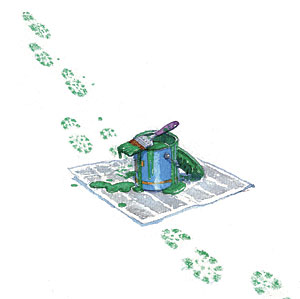
The electrical production and distribution system in the United States is about 32% efficient according to the Department of Energy. In other words, about one-third of the available energy in the fuel burned at a power plant makes it to the customer’s electric meter. For a heat pump to be fossil-fuel neutral compared to a (90% or more) high-efficiency furnace, it would have to extract about 2w of heat from the ground for every watt of electricity it uses, sending a total of 3w of heat to the building. In the language of heat-pump ratings, this 3-to-1 ratio is called a coefficient of performance (COP) of 3. COP is the standard measure of a heat pump’s efficiency. (For more on heat pumps, see “Is a Heat Pump Right for You.”)
Manufacturers’ COP ratings for ground-source heat pumps vary with the temperature of the groundwater and the temperature of the air in the building, but are usually between 3 and 4 for groundwater temperatures in the 50s. But those ratings do not include the electricity used by the water pump, and do not reflect real-world groundwater temperatures, which get colder after a heat pump has been extracting heat for a while.
Where’s the real-world data?
Getting an accurate view of the whole picture requires turning to actual measured results. Amazingly, despite the installation of thousands of ground-source heat pumps in the United States, nobody has apparently ever gone around and measured the COP of randomly selected installed systems and published the data.
The closest thing available to a real-world study of installed heat-pump efficiency is a small study done by a heat-pump trade association in cooperation with an electric utility company—surely not neutral parties.
For the study, they installed new systems that included such energy-efficient features as high-efficiency fan motors and PVC ducts, and still managed to squeeze out a COP of only just over 3 when the systems were new. (The trade association and utility will not share the actual measured data for this study.) As the groundwater temperature drops, this COP can be expected to drop as well.
I have done some measuring, and people I know have done some measuring. Based on these measurements, I think a whole-system COP of about 2 is a realistic estimate of the performance of a typical, real-world, installed system. Unfortunately this means that the geothermal heat pump actually will burn significantly more fossil fuel than a high-efficiency gas or oil boiler or furnace.
Almost nobody knows this, though, because almost nobody is measuring. And no measuring means nobody is learning from mistakes that are wasting energy. More important, it means that many people are blindly installing what they are led to believe is a magic heating and cooling appliance. What we should be doing is rewarding manufacturers and installers who are trying to improve on these shortcomings. Instead, we just keep renaming the heat pump to make it sound less technical, and avoid the implication that the systems actually use any energy at all. Heat pump has become geothermal, geoexchange, and sometimes even geocomfort.
A more honest approach would be to admit that heat pumps use electricity, which in most cases means burning more fuel than would be consumed by an appliance that burns gas right in the home. Admitting this could lead to finding out what, if anything, can be done to reduce the amount of electricity heat pumps use. Meanwhile, with heat pumps no longer seen as magic, attention can shift to making buildings energy efficient. Anyone interested in reducing the amount of energy that buildings use can focus on using good insulation and air-tightening, well-designed ventilation systems, shading windows from summer sun, sealed combustion appliances, and thermostats in every room.
To ask the author questions, or to comment on this article, visit our Taking Issue blog.




